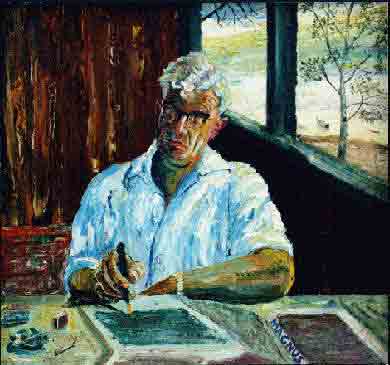A Christian Theory of Social Institutions 1986 p. 107 [This is Magnus Verbrugge's translation of Grondproblemenen der Wijsgerige Sociologie (Studium Generale T H Delft 1946/7), tien voordrachten initially published in Prof Dr H Dooyeweerd Verkenningen in de Wijsbegeeerte, de Sociologie en de Rechtsgeschiedenis Buijten en Schipperheijn Amsterdam 1967 pp. 145-6
"The human community has its common origin in creation. it shares in the fall and its need for redemption. Because it has this central, religious nature, the community of man transcends both the temporal communal and temporal social relationships. But, according to the demands of the central command of love, this common religious nature of mankind ought to come to expression in both relationships (BCW note: ie in temporal communal as well as temporal social relationships). It is, therefore, of special significance that Christ Jesus answered the question of the Pharisee, "Who is my neighbor?" with the parable of the merciful Samaritan. For Jews and Samaritans entertained no private communal relationships. The Samaritan encounters the Jew, robbed and injured, in a temporal social relationship of a typical moral qualification. He shows that he understands the central significance of neighborly love better than the Jewish priest and Levite, who found their fellow countryman in a hapless state and passed him by."
"De wortelgemeenschap van het menselijke geslacht in schepping, zondeval en verlossing gaat zowel de tijdelijke gemeenschaps- als de tijdelijke maatschapsverhoudingen te boven, omdat zij van centrale, religieuze aard is. Maar zij dient naar de eis van het centrale liefdegebod in beide tot uitdrukking te komen. Daarom is het van bijzondere betekenis, dat Christus Jezus op de vraag van de Fraizeer: 'Wie is mijn nasste?' antwoordt met de gelijkenis van de barmhartige Samaritaan. Want de Joden en de Samaritanen onderhielden geen private gemeenschapsbetrekkingen me elkander. De Samaritan ontomoet de door rovers uitgeschudde en gewonde Jood in een tijdelijke maatschapsverhouding van typisch morele kwalificatie. Maar hij blijkt de centrale betekenis der naastenliefde beter te hebben verstaan dan de Joodse priester en leviet, die hun volksgenoot in zijn hupeloze staat aantroffen en 'tegenover hem voorbijgingen' " (the date is 1946/7 and the terms of Dooyeweerd's explanation are relevant not least because of the cessation of the war, the only recently overcome "helpless state" of Jewish people who had been targetted within the domain of Nazi Germany, and with the setting up of the Jewish state in Palestine).
Kenneth Bailey in the exposition of this parable (in Through Peasant's Eyes 1980 pp.33-57) takes the discussion of Dooyeweerd one step further by pointing out that Jesus' teaching prodded the imagination of his hearers by explicitly noting that the man had been robbed and stripped; he was then left for dead. In other words, all three passersby, could not definitively determine the ethnicity of the victim by his appearance.
Sunday, February 27, 2005
Subscribe to:
Post Comments (Atom)




No comments:
Post a Comment